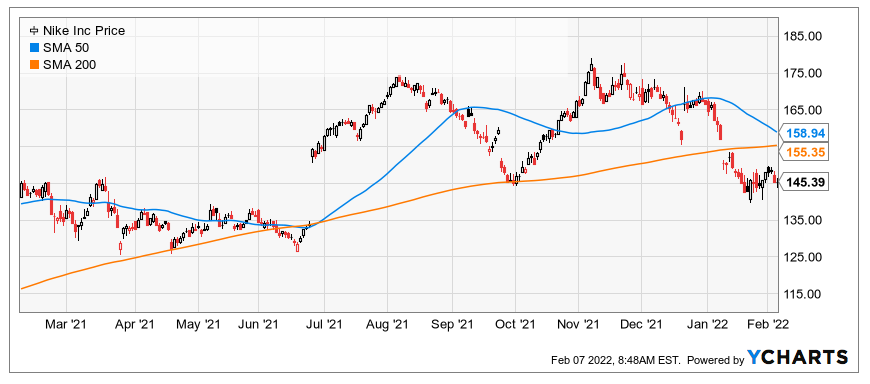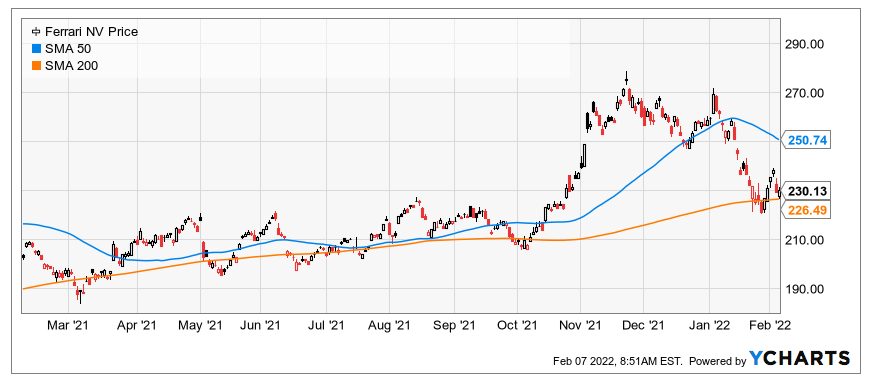Pulitzer Prize winning journalist Jon Markman, editor of The Power Elite and Weiss Technology Portfolio, compares the current state of the market to trench warfare between the bulls and the bears, each alternately winning day to day.
According to Jon, “big moves are about narratives and what bulls have to do is recapturethe narrative, and explain why the economy is in great shape.”
Weiss Ratings Financial News Anchor Jessica Borg interviewed Jon. The two discussed a company whose sales are growing despite supply-chain issues, an automaker “unaffected by the global economy” and why it’s time to look at “some of the best franchises in the world and buy them with courage.”
You can watch the video segment or continue reading for the full transcript.
Jessica Borg (narration): Right now, the market is telling a story.
Jon Markman: Big stock market moves are about narratives and what bulls have to do is recapturethe narrative.
When they finally get that narrative going, the stock market is going to go up a lot.
JB (narration): Jon Markman, editor of Pivotal Point says it’s a battle between the bulls and the bears, stemming from the impact of inflation.
JM: I think you’re going to see over the next month and a half, the bulls will start to regain their advantage.
And by midyear, we’ll look back and say, “What was that all about in January?”
JB: At what point should the state of things become a concern?
JM: What bulls really have to do is define the line in the sand. The line in the sand is that 4,430 area of the S&P 500. That’s the 200-day moving average.
If you understood that the 12-month moving average was the line in the sand back in 2008, you would’ve saved yourself a year and a half of pain.
Above that level, I think we’ll be fine. If we get below that level, “Watch out below!”
JB (narration): Jon saysat this point, the best companies are on sale. Share prices have dropped with the broad market, but they’ll be the first to rebound.
JM: Even if there’s a bear market that persists over a year, two years later you’ll say, “Wow, that was a pretty good place to buy these companies.”
JB (narration): Top on his list is Nike (NKE).
JM: It’s the quintessential growth company. It has an iconic brand with all the best athletes on board.
JB (narration): It’s considered one of the most desirable brands, right after the iPhone.
JM: Among American teens it’s the number one footwear brand and it’s five times more valuable as a brand than the next best brands, which are Vans VF (VFC), and then Adidas AG (ADDYY).
Its sales have grown despite supply chain constraints.
Nike reported revenue in the most recent quarter as 12.2 billion dollars, which is up 16% year over year.
And the reason it does so well is it’s a monopoly with pricing power. There’s only one company that can make Nike and that’s Nike.
It’s fascinating that they have such a low-cost basis, but such a high value.
JB: And Nike is now dipping its toes into the metaverse.
JM: This is a big deal because as the metaverse grows, which it will, Nike will offer all kinds of things that cost them absolutely nothing and will sell for a lot of money.
JB (narration): Nike just bought RTFKT Studios, to design collectibles in the virtual world, like avatars and digital sneaks.
JM: They’ll be Nike shoes and Nike will sell them to you for like $10 and they pay zero for them, so that’s pretty creative to margins right there.
Executives told investors their profit margins were going to grow to 40% over the next two years, which is phenomenal.
I want to point out that low-cost manufacturing means great margins.
Shares are up 22% year over year for the past ten years, and the next ten years to me look even better.
JB (narration): In The Power Elite, Jon focuses on companies that dominate their niche, like Ferrari N.V. (RACE).Now is the time to buy stock.
JB: Ferrari is synonymous with exclusivity.
JM: The key for Ferrari is limited production. Ferrari can sell as many cars as it can produce, so, executives make very few to make them more exclusive.
Whereas some automakers are using robots to bring down the cost, Ferrari has taken the opposite route. All their cars are handcrafted and custom-made.
JB (narration): Cars are sold out for the next five years.
JM: Ferrari’s operating margins are absolutely obscene by industry standards.
The company earned $80,000 in profits per vehicle in 2020. That’s about the cost of a Mercedes or a BMW.
JB (narration): And Ferrari’s new half-million dollar hybrid EV (electric vehicle) is sold out.
JM: Go get it, Jessica. That’s pocket change.
JB (narration): The company currently has a share value at around $220.
JM: The market cap is only $41 billion, so the valuation is strangely enough, actually significantly less than Ford (F) and General Motors Company (GM), and Ferrari is a much better business with much better prospects.
JB (narration): Since its IPO in 2015 …
JM: Ferrari has risen an average of 38% a year, on a compounded basis. Right now, it’s on sale.
You can’t buy a real Ferrari on sale, but you can buy Ferrari stock on sale and that’s what’s happening right now.
JB (narration): So, for long-term profits, take advantage of today’s market forces.
JB: Senior analyst Jon Markman, thank you so much for your expertise today.
JM: Not a problem. Great to talk with you.
Best wishes,
The Weiss Ratings Team


